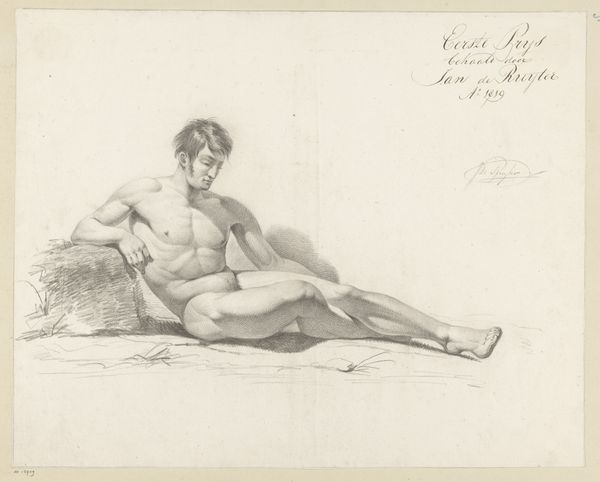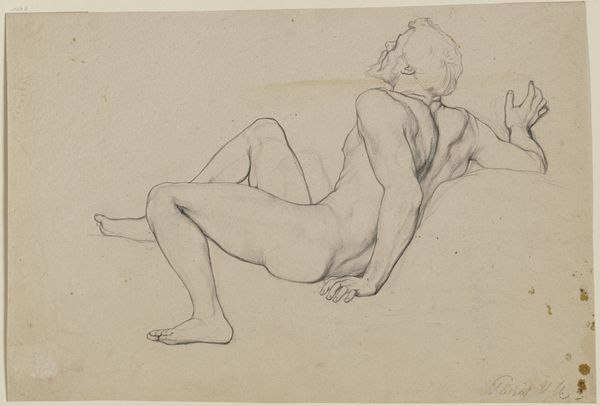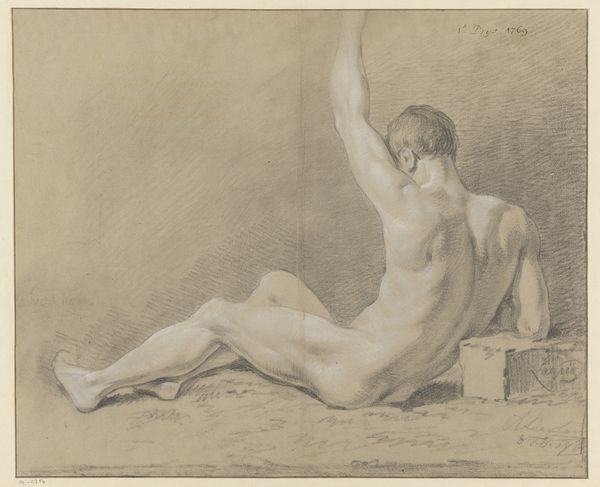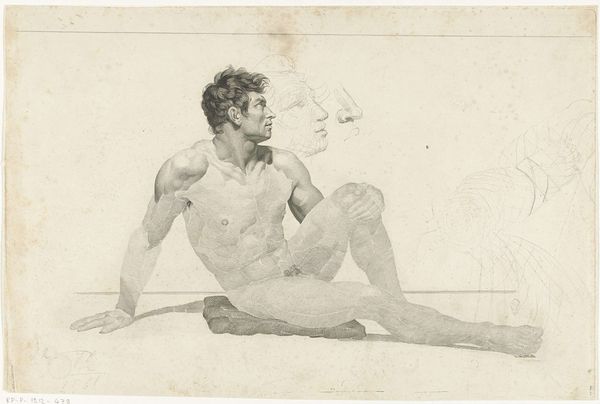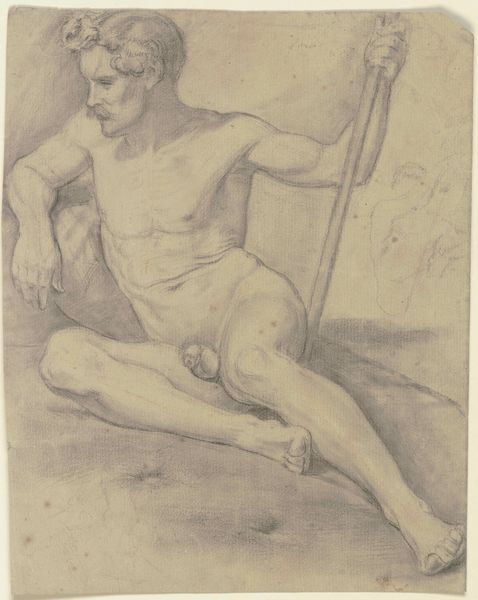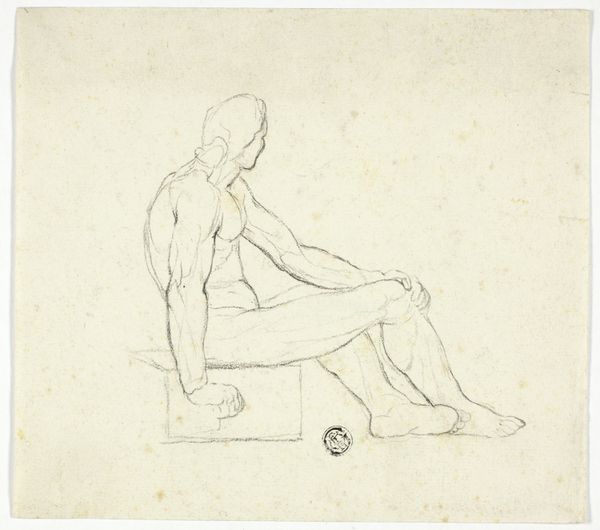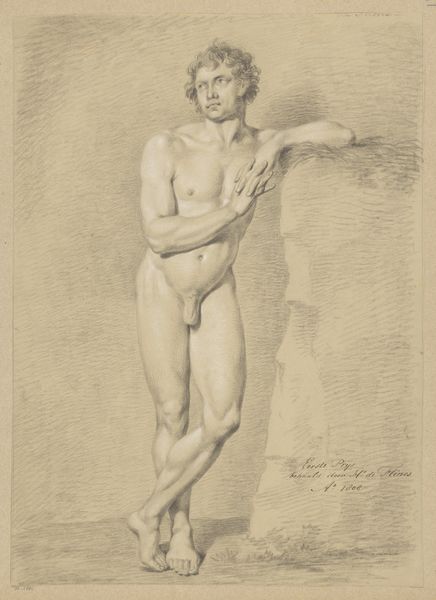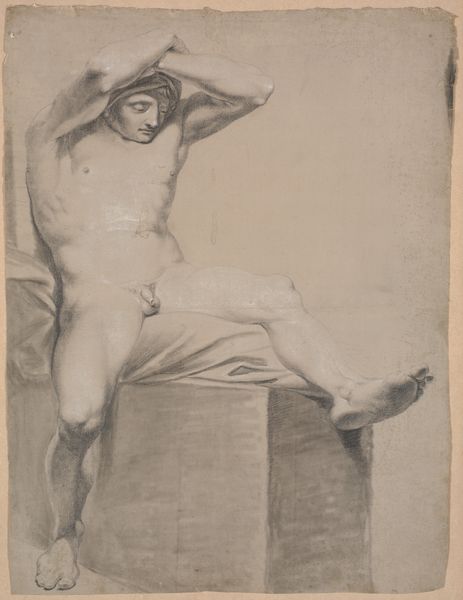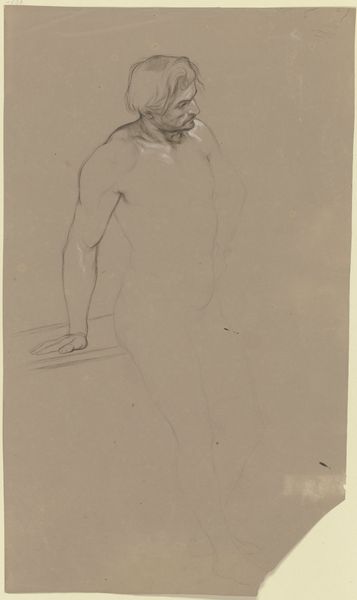
drawing, paper, pencil
#
portrait
#
pencil drawn
#
drawing
#
classical-realism
#
figuration
#
paper
#
form
#
ancient-mediterranean
#
pencil
#
line
#
academic-art
#
realism
Dimensions: 372 × 533 mm
Copyright: Public Domain
Editor: So, here we have John Downman’s 1775 pencil drawing of the “Statue of the Dying Gaul," held at The Art Institute of Chicago. What strikes me most is the delicate use of line to capture the figure’s form. What do you see in this piece? Curator: I see the social life of materials. This isn't just a sketch; it's a record of labour and access. Consider the paper itself. Where was it manufactured? What were the labour conditions? Was it widely available or a luxury product, hinting at the artist's social standing and the drawing's intended audience? Editor: That's a perspective I hadn’t considered! I was mostly focused on the artistic skill and the representation of the sculpture. Curator: Exactly. And the pencil too—the graphite source, the methods of its production and distribution. This piece encourages us to question how these materials mediate our understanding of ancient sculpture in the late 18th century. Do the physical qualities of the drawing—the subtle gradations of tone achieved with pencil—alter our emotional or intellectual response to the 'Dying Gaul' compared to the marble original? Editor: So, it’s not just about the image, but also about how the image came to be and the journey of the materials. Curator: Precisely! Downman wasn't simply copying; he was engaging in a social and economic process by choosing and utilizing specific materials in his artistic practice. Editor: That makes me think about how readily we take these materials for granted now. I never stopped to think of them as being a signifier of wealth or status. Curator: We are products of mass production and its access. And these "copies" are rarely, if ever, mere copies. Editor: Thanks. It certainly gives a whole new dimension to this drawing!
Comments
No comments
Be the first to comment and join the conversation on the ultimate creative platform.

